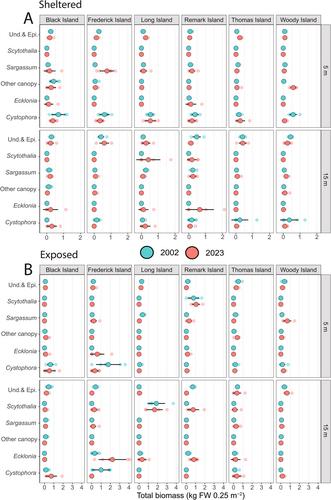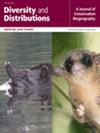Long-Term Stability of Marine Forests Facing Moderate Gradual Warming in a Remote Biodiversity Hotspot
Abstract
Aim
Ocean warming and marine heatwaves are rapidly reconfiguring the composition of seaweed forests—the world's largest coastal vegetated biome. Seaweed forest responses to climate change in remote locations, which constitute the majority of the forest biome, remain however poorly quantified. Here, we examine the temporal stability of the seaweed forests across a global seaweed biodiversity hotspot where several species are predicted to undergo severe range contractions in this century.
Location
Western south coast of Australia.
Methods
Seaweed forest canopies were censused at 18 shallow (< 10 m) sheltered reefs between 1997 and 2006 and again between 2021 and 2024 (six sites per location). We also surveyed 24 sites to examine whether temporal changes differed over gradients of wave exposure and depth.
Results
Seaweed forest canopies across all locations showed surprisingly little change in biomass, cover, stand density and species composition over two decades, with strong spatial structuring across depth and exposure gradients persisting over time. The average thermal affinity of forest canopies (i.e., the community temperature index, CTI) did not track warming, suggesting that factors other than temperature (e.g., wave exposure and depth) are more important drivers of forest stand structure and/or that key thermal thresholds have not yet been crossed. Forests in the location with the most pronounced warming exhibited increased thermal bias over time (total bias of 0.8°C–2.2°C), indicating they were dominated by species with cooler affinities than their local temperatures.
Main Conclusions
The greater thermal bias in forests at the warmer edge of southern Australia suggests these will be more susceptible to future warming-related compositional changes than forests in cooler locations. The relative stability we found contrasts with a current context of rapidly changing seaweed forests nationally and globally, highlighting the need to deepen our ecological understanding of the region so that future changes to its unique biodiversity and ecosystem services can be predicted and mitigated.


 求助内容:
求助内容: 应助结果提醒方式:
应助结果提醒方式:


